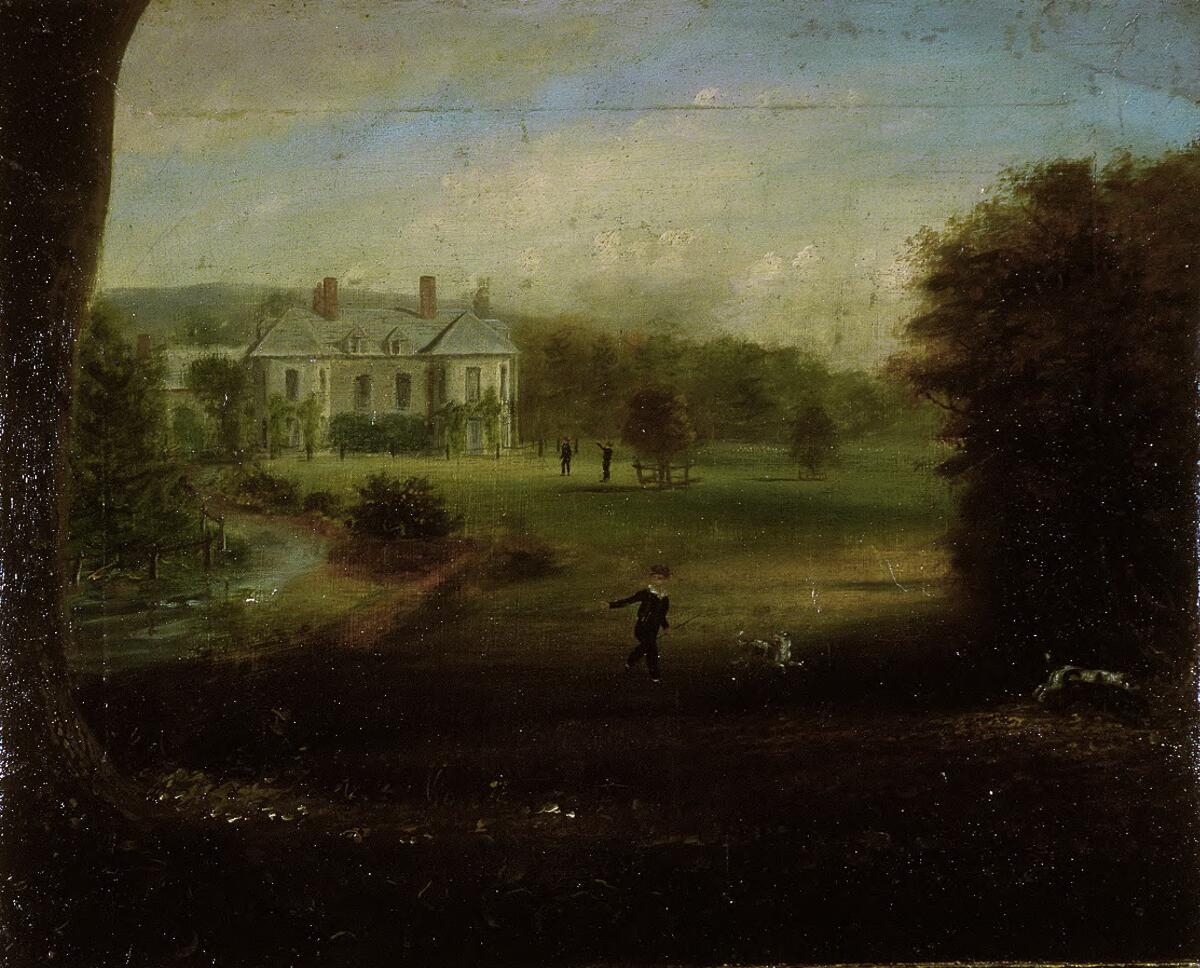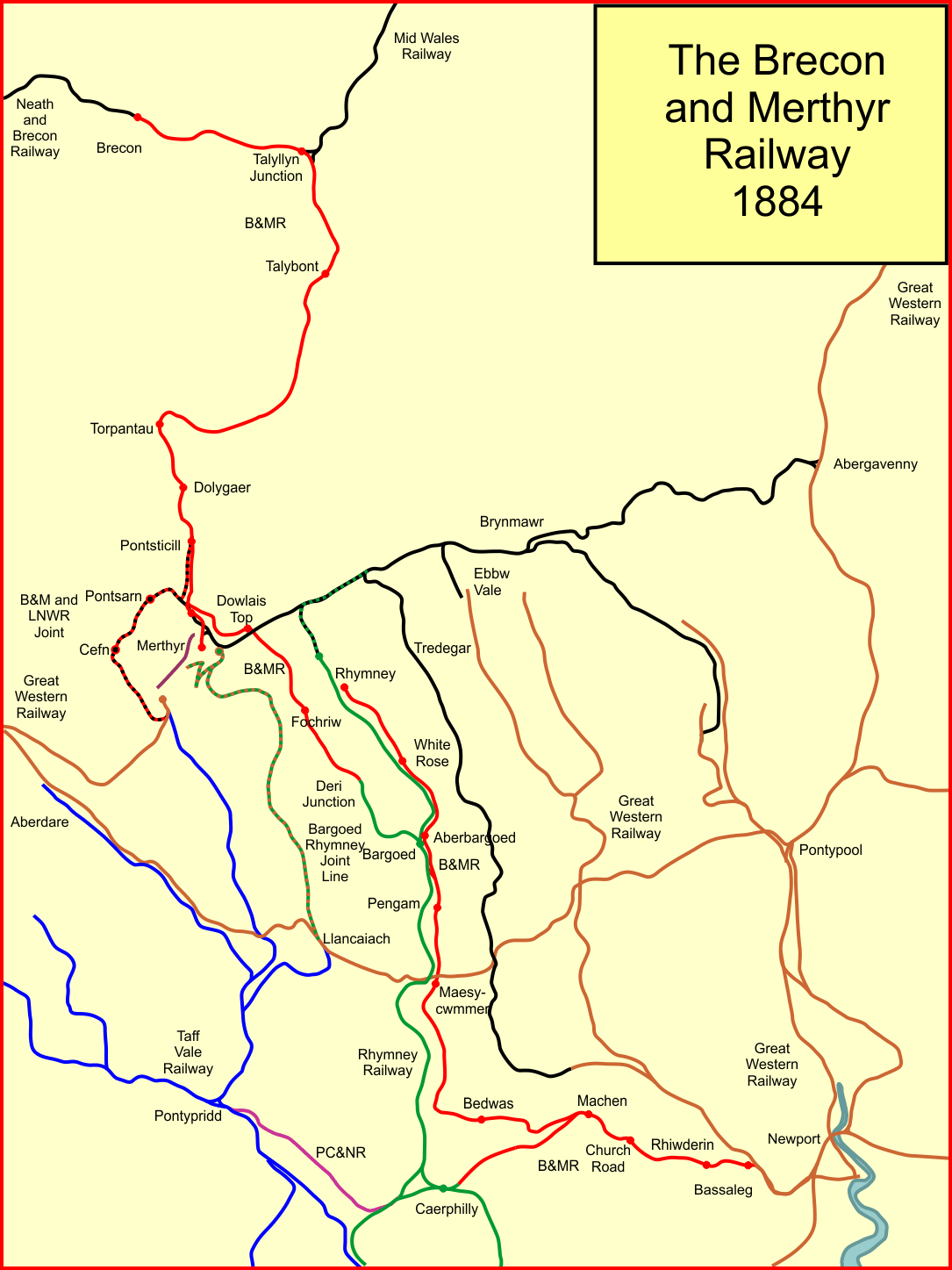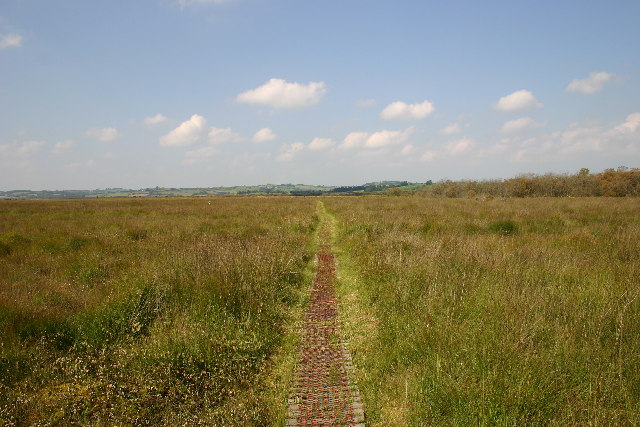|
David Davies (Liberal Politician)
David Davies (18 December 1818 – 20 July 1890) was a Welsh industrialist and Liberal politician who sat in the House of Commons between 1874 and 1886. Davies was often known as David Davies Llandinam (from the place of his birth, Llandinam in Montgomeryshire). Ivor Bulmer-Thomas: ''Top Sawyer: David Davies of Llandinam'' (Golden Grove, Carmarthen, 1988) He is best remembered today for founding Barry Docks. Early life Davies was the son of David Davies and his wife Elizabeth and the eldest of nine children. He attended the day school at Llandinam but was primarily self-educated. He began work as a sawyer and went into agriculture, working alongside his father, who died when David was aged 20, leaving him to take charge of the family. He was successful from an early age and in 1848 took over a larger farm called Tynymaen, which later became the home farm of the Plasdinam estate. Two years later he took over a further holding, Gwerneirin. Early business career His first e ... [...More Info...] [...Related Items...] OR: [Wikipedia] [Google] [Baidu] |
Cardigan Boroughs (UK Parliament Constituency)
The Cardigan District of Boroughs was a parliamentary constituency in Wales which returned one Member of Parliament (MP) to the House of Commons of the Parliament of the United Kingdom and its predecessors, from 1542 until it was abolished for the 1885 general election. The borough constituency comprised the four towns of Cardigan, Aberystwyth, Lampeter and Adpar - geographically separated from each other but all within the county of Cardiganshire. History For much of its existence, the constituency was dominated by a relatively small number of landed families. During the eighteenth century, representation was keenly contested between the county families. At the turn of the nineteenth century, the county town of Cardigan remained the largest of the boroughs with a population of 1,911 in 1801, and was controlled by the Earl of Lisburne. Lisburne's heir, John Vaughan, held the seat unopposed from 1796. However, Aberystwyth experienced rapid population growth in this period and i ... [...More Info...] [...Related Items...] OR: [Wikipedia] [Google] [Baidu] |
Oswestry And Newtown Railway
The Oswestry and Newtown Railway was a British railway company that built a line between Oswestry in Shropshire and Newtown Montgomeryshire, now Powys. The line opened in stages in 1860 and 1861. It was conceived to open up the area to rail transport, when local opinion formed the view that the trunk railway companies would not do so. Subscription money for the construction proved very difficult to generate. It was the action of a contractor partnership, Davies and Savin, in agreeing to accept shares as the majority of their payment for construction work, that saved the company from failure. Forming a local network with other local concerns, the O&NR amalgamated with them, forming the Cambrian Railways, in 1863. The industry in the area was not buoyant and hoped-for long-distance traffic did not materialise, although the development of Aberystwyth as a resort provided a useful benefit. The railway connected to the emerging national network at Oswestry, but the later connection o ... [...More Info...] [...Related Items...] OR: [Wikipedia] [Google] [Baidu] |
Tregaron
Tregaron ( "town of St Caron") is an ancient market town in Ceredigion, Wales, astride the River Brenig, a tributary of the River Teifi. Tregaron is northeast of Lampeter. According to the 2011 Census, the population of the ward of Tregaron was 1,213 and 67% of the population could speak Welsh. Tregaron is a community covering . Two-thirds of the population were born in Wales. History Tregaron received its royal charter as a town in 1292.''Tregaron: Images of a country town'' Tregaron and District Historical Society & Landmark Publishing UK, 2006. It owes its origin and growth to its central location in the upper Teifi Valley. It was the market town for the scattered agricultural communities in the broad, fertile countryside to the south and the rich landowners with extensive holdings in the uplands to the east, the home of many sheep and few people. To the north was Cors Caron which was a fertile land when drained, and to the west a hilly region with self-sufficient farmers ... [...More Info...] [...Related Items...] OR: [Wikipedia] [Google] [Baidu] |
Gogerddan
__NOTOC__ Gogerddan, or in English, Gogarthen, was an estate near to Trefeurig and the most important in what was then the county of Cardiganshire, Wales. Owned since at least the fifteenth century by the Pryse family, the main house, called Plas Gogerddan, still stands and is a Grade II listed building. The estate became especially wealthy from the seventeenth century on the profits from lead mining, which is when the house was constructed. The house was significantly altered in the 1860s and was sold by Sir Pryse Loveden Saunders-Pryse to University College of Wales in 1949. Gogerddan provisionally held the high temperature record for Wales – 35.3°C, which was recorded on 18 July 2022. It replaced the previous record holder Hawarden which held the record for almost 32 years. This record was short-lived, however, as by the end of the same day, Hawarden recorded a temperature of 37.1°C. See also * Pryse baronets There have been two baronetcies created for members of th ... [...More Info...] [...Related Items...] OR: [Wikipedia] [Google] [Baidu] |
Pryse Baronets
There have been two baronetcies created for members of the Pryse family, one in the Baronetage of England and one in the Baronetage of the United Kingdom. Both creations are extinct. The Pryse Baronetcy, of Gogerddan (or Gogarthen) in the County of Cardigan, was created in the Baronetage of England on 9 August 1641 for Richard Pryse, subsequently Member of Parliament for Cardiganshire. He was succeeded by his eldest son, Sir Richard, the second Baronet, who also represented Cardiganshire in Parliament. Both he and his younger brother and successor, Sir Thomas, the third Baronet, died childless. Sir Thomas was succeeded by his nephew, Sir Carbery, the fourth Baronet, the son of Carbery Pryse, third and youngest son of the first Baronet. Sir Carbery also sat as Member of Parliament for Cardiganshire. The title became extinct when he died without issue in 1694. The Pryse estates eventually devolved on his kinsman Edward Pryse and then on Lewis Pryse, Member of Parliament for b ... [...More Info...] [...Related Items...] OR: [Wikipedia] [Google] [Baidu] |
Henry Richard
Henry Richard (3 April 1812 – 20 August 1888) was a Congregational minister and Welsh Member of Parliament between 1868–1888. Richard was an advocate of peace and international arbitration, as secretary of the Peace Society for forty years (1848–1884). His other interests included anti-slavery work. Early life Born in 1812 in Tregaron, Ceredigion, he was the second son of Ebenezer Richard (1781–1837), a Calvinistic Methodist minister. He was educated initially at Llangeitho grammar school, and attended Highbury College, near London, to obtain qualifications for the ministry. In 1835, after ordination Richard was appointed pastor at the Congregational Marlborough Chapel, in the Old Kent Road, London. Its foundation stone had been laid by Thomas Wilson in 1826. Richard succeeded Thomas Hughes, and raised sufficient funds to pay off the chapel's building loans and establish a school (British School, Oakley Place). Secretary of the Peace Society Richard resigned in 1850 ... [...More Info...] [...Related Items...] OR: [Wikipedia] [Google] [Baidu] |
Brecon And Merthyr Junction Railway
The Brecon and Merthyr Tydfil Junction Railway (B&MR) was a railway company in Wales. It was originally intended to link the towns in its name. Finding its access to Merthyr difficult at first, it acquired the Rumney Railway, an old plateway, and this gave it access to Newport docks. This changed its emphasis from rural line to mineral artery. It opened at the Brecon end to a point near Dowlais in 1863, and in 1865 it opened a disconnected section from Rhymney to Newport. In due course the company connected the two sections and reached Dowlais and Merthyr, but had to concede sharing a route with the powerful London and North Western Railway. The B&MR was always short of money, and was notable for its prodigious gradients, but it survived until the grouping of 1923, when it became part of the Great Western Railway. Its network declined steeply after 1945, and passenger operation ceased in 1962. Goods and mineral operation also lost its market, and as of 2020, only a short stub to ... [...More Info...] [...Related Items...] OR: [Wikipedia] [Google] [Baidu] |
Ceredigion
Ceredigion ( , , ) is a county in the west of Wales, corresponding to the historic county of Cardiganshire. During the second half of the first millennium Ceredigion was a minor kingdom. It has been administered as a county since 1282. Ceredigion is considered a centre of Welsh culture and just under half of the population can speak Welsh according to the 2011 Census. The county is mainly rural, with over of coastline and a mountainous hinterland. The numerous sandy beaches and the long-distance Ceredigion Coast Path provide views of Cardigan Bay. In the 18th and early 19th centuries, Cardiganshire had more industry than it does today; Cardigan was the commercial centre of the county; lead, silver and zinc were mined and Cardigan was the principal port of South Wales prior to the silting of its harbour. The economy became highly dependent on dairy farming and the rearing of livestock for the English market. During the 20th century, livestock farming became less profitable ... [...More Info...] [...Related Items...] OR: [Wikipedia] [Google] [Baidu] |
Lampeter
Lampeter (; cy, Llanbedr Pont Steffan (formal); ''Llambed'' (colloquial)) is a town, community and electoral ward in Ceredigion, Wales, at the confluence of the Afon Dulas with the River Teifi. It is the third largest urban area in Ceredigion, after Aberystwyth and Cardigan, and has a campus of the University of Wales Trinity Saint David. At the 2011 Census, the population was 2,970. Lampeter is the smallest university town in the United Kingdom. The university adds approximately 1,000 people to the town's population during term time. Etymology The Welsh name of the town, ', means "Peter's chuch tStephen's bridge" in reference to its church and castle. Its English name derives from this, as does the colloquial Welsh name '. History The Norman castle of ''Pont Steffan'' ("Stephen's bridge" in English) occupying a strategic position beside the River Teifi was destroyed in 1187 after it had been conquered by Owain Gwynedd. Cardiganshire was one of the royal counties establis ... [...More Info...] [...Related Items...] OR: [Wikipedia] [Google] [Baidu] |
Cors Caron
Cors Caron is a raised bog in Ceredigion, Wales. Cors is the Welsh word for "bog". Cors Caron covers an area of approximately .The Ramsar site is 874 ha. Cors Caron represents the most intact surviving example of a raised bog landscape in the United Kingdom. About 44 different species groups inhabit the area including various land and aquatic plants, fish, insects, crustaceans, lichen, fungi, terrestrial mammals and birds. History Cors Caron began to be formed 12,000 years ago, at the end of the last glacial period. A raised bog of this type develops from a lake or flat marshy area, over either non-acidic or acidic substrates. Over centuries there is a progression from open lake, to marsh and then fen (or on acidic substrates, valley bog), as silt or peat fill the lake. Eventually, peat builds up to a level where the land surface is too flat for ground or surface water to reach the centre of the wetland. Trees in the area that died (in about 3000 BC) and were preserved by the ... [...More Info...] [...Related Items...] OR: [Wikipedia] [Google] [Baidu] |
Aberystwyth
Aberystwyth () is a university and seaside town as well as a community in Ceredigion, Wales. Located in the historic county of Cardiganshire, means "the mouth of the Ystwyth". Aberystwyth University has been a major educational location in Wales since the establishment of University College Wales in 1872. The town is situated on Cardigan Bay on the west coast of Wales, near the confluence of the River Ystwyth and Afon Rheidol. Following the reconstruction of the harbour, the Ystwyth skirts the town. The Rheidol passes through the town. The seafront, with a pier, stretches from Constitution Hill at the north end of the Promenade to the harbour at the south. The beach is divided by the castle. The town is divided into five areas: Aberystwyth Town; Llanbadarn Fawr; Waunfawr; Llanbadarn; Trefechan; and the most populous, Penparcau. In 2011 the population of the town was 13,040. This rises to nearly 19,000 for the larger conurbation of Aberystwyth and Llanbadarn Fawr. Th ... [...More Info...] [...Related Items...] OR: [Wikipedia] [Google] [Baidu] |
Pencader, Carmarthenshire
Pencader () is a small village in the Welsh county of Carmarthenshire, and is part of the Community and Parish of Llanfihangel-ar-Arth. It is located around 3 miles (5 km) south-east of Llandysul and 6.5 miles (10 km) south-west of Llanybydder, in the valley of the Gwen brook, shortly before the confluence with the River Talog, to form the River Tyweli (a tributary of the Teifi). It is a village of little more than 500 houses, two shops, two pubs and an Anglican church (St Mary’s). For many years, it was one of the main stops on the Carmarthen - Aberystwyth rail route, and was the junction for the service to Newcastle Emlyn; the Pencader Tunnel enabled services to reach Carmarthen via Llanpumsaint. The decline of the railways saw the Newcastle Emlyn branch line closed in 1952 and the main line closed to passengers in 1965. History A battle was fought here between Gruffydd ap Llywelyn and Hywel ab Edwin in 1041; Gruffydd was the victor, and went on to become the ... [...More Info...] [...Related Items...] OR: [Wikipedia] [Google] [Baidu] |








.jpg)

